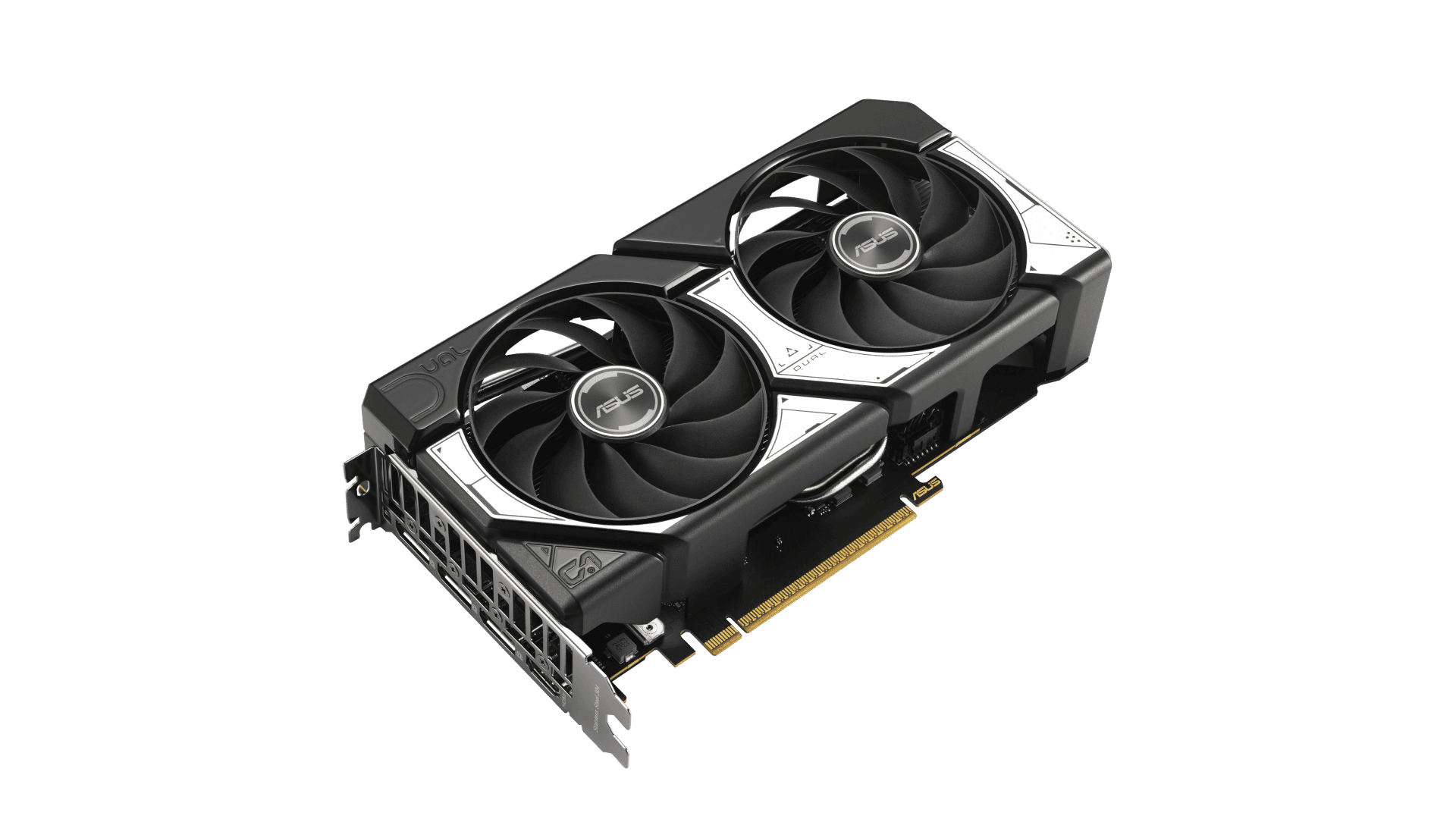The June 2025 Steam Hardware & Software Survey has arrived—and one of the most eye-catching developments is the rapid rise of NVIDIA’s new RTX 50-series GPUs. According to Valve’s latest data, the GeForce RTX 50 lineup has already secured a 3.69% share of all GPUs used by Steam players, a remarkable achievement for a product family that only began rolling out in early 2025.
This figure represents all visible RTX 50-series models combined, with the RTX 5070 leading the pack at 0.99%, followed by the RTX 5080 (0.55%), 5070 Ti (0.53%), and newly listed entries like the RTX 5060 Ti (0.39%) and RTX 5060 (0.32%). Even NVIDIA’s flagship RTX 5090 has now appeared with a 0.18% share, marking its first time showing up in the survey.
A Fast Start for Blackwell
The RTX 50-series is powered by NVIDIA’s new Blackwell architecture, which brings higher power efficiency, better ray tracing performance, and an upgraded iteration of DLSS (Deep Learning Super Sampling). With the RTX 4070 and 4060 cards still dominating the charts individually, the 50-series’ early momentum suggests a strong early-adopter base among gamers seeking next-gen performance.
In fact, several RTX 50-series laptop variants are also gaining traction, including the RTX 5060 Laptop GPU, which appeared for the first time this month at 0.45%.
A Slow Rollout Still Outpacing Expectations
What makes this 3.69% share particularly impressive is the gradual nature of NVIDIA’s rollout. The RTX 5090 and 5080 were the first to launch in March 2025, with midrange options like the 5070 and 5060 following closely behind. Despite ongoing supply constraints and premium pricing on the high-end models, Steam users are clearly eager to adopt the new generation.
For comparison, when the RTX 40-series launched in 2022, it took several months for the RTX 4090 and 4080 to even crack 1% on Steam. The faster visibility of the 50-series indicates not just enthusiasm, but also better availability—even amid fierce competition for GPUs in both gaming and AI workloads.
Where Are AMD and Intel?
What’s notably missing from the June 2025 survey are any entries from AMD’s Radeon RX 9000 series or Intel’s Battlemage GPUs. While some enthusiasts on Reddit and forums claim to own early RDNA 4 cards, their usage numbers haven’t crossed the minimum visibility threshold for Valve’s reporting. This absence might reflect a combination of low market share, limited distribution, or detection issues with newer drivers.
Intel’s Arc GPUs, while improving with each driver update, still occupy less than 0.3% of the Steam user base, with no sign yet of their next-generation cards making an impact.
RTX 4060 Still Rules—for Now
Despite the buzz around the 50-series, the most popular individual GPU on Steam remains the RTX 4060 Laptop GPU, holding strong at 4.79%. The desktop RTX 4060 isn’t far behind at 4.24%, followed by the aging but still popular RTX 3060 at 4.42%.
However, with newer cards like the 5070 Ti and 5060 Ti gaining steam—and potentially more affordable versions on the way—these older models could start seeing significant decline in the months ahead.
What’s Next?
NVIDIA is expected to continue releasing additional SKUs across the RTX 50-series lineup throughout the second half of 2025, likely including a 5050-class budget option and more laptop variants. Given the early adoption trend already underway, we could see RTX 50 GPUs reach 5–7% of the Steam population before the end of the year.
This is especially likely if NVIDIA ramps up bundling offers or game promotions tied to new hardware. Meanwhile, all eyes will be on AMD to see whether its next-gen cards can break into the Steam charts—or if this generation will once again belong to Team Green.
The Best Bang For Your Buck Mid Range Gaming PCs
Finding a good mid-range gaming PC can feel overwhelming with so many options out there. You don’t need to spend thousands on a top-end system, but you also want enough power to run modern games smoothly. The best mid-range gaming PCs offer excellent value by balancing performance and price, typically featuring solid graphics cards like the RTX 4060 or RX 6700 XT paired with capable processors.
Several well-known brands like iBuyPower, MSI, and HP Omen provide quality mid-range options that won’t break the bank. These systems usually handle 1080p gaming with ease and can often manage 1440p resolution at decent frame rates. The sweet spot for mid-range gaming PCs in 2025 falls between $800-1500, giving gamers a machine that won’t need upgrading for several years.
1. iBuyPower Y60
The iBuyPower Y60 stands out as a strong contender in the mid-range gaming PC market. It features the eye-catching Hyte Y60 case, which showcases your components through its unique three-sided glass design.
Performance-wise, this PC packs a punch. Recent configurations include options with the Intel Core i9 14900KF processor and RTX 4070 graphics card, providing excellent gaming capabilities. These specs handle modern games with ease at high settings.
The Y60 typically comes with 32GB of DDR5 RAM and generous storage options, often featuring a 2TB NVMe SSD. This combination ensures quick load times and plenty of space for your game library.
Connectivity is another strong point. The system includes a front USB-C port and good expansion options, making it convenient to connect peripherals and add components later.
Price-wise, the iBuyPower Y60 hits the sweet spot for mid-tier gaming PCs. Models typically range from $1000 to $1500, offering solid value for the hardware included.
The PC’s cooling system keeps components at safe temperatures even during extended gaming sessions. This matters for both performance stability and the longevity of your investment.
Build quality is noteworthy too. iBuyPower generally uses named-brand components rather than generic parts, which adds to the system’s reliability and resale value.
For gamers who want a stylish, capable mid-range PC without building one themselves, the iBuyPower Y60 offers an attractive balance of performance, looks, and price. The system provides room to grow through future upgrades while delivering strong gaming performance right out of the box.
2. Maingear Zero Ruby
The Maingear Zero Ruby stands out as a top choice for mid-range gaming PCs in 2025. This pre-built system has earned high marks for its balance of performance and value.
What makes the Zero Ruby special is its up-to-date hardware configuration. It comes equipped with components that handle both 1440p and 4K gaming with impressive results. Many users choose this PC specifically for its processing power.
The AMD 7800X3D processor is a key selling point for gamers. This CPU was designed specifically with gaming in mind, making it an excellent heart for a mid-range system. The processor pairs well with the included NVIDIA RTX 4070 Super graphics card.
Maingear puts each PC through rigorous stress testing before shipping. This quality control helps ensure the system performs well right out of the box. The company also uses prequalified hardware components, which contributes to a quiet and reliable gaming experience.
Customer experience is another area where the Zero Ruby shines. The Maingear Zero Ruby is highly recommended by reviewers who note that finding a comparable mid-range configuration elsewhere is challenging.
For first-time PC buyers, the Zero Ruby offers an accessible entry point. Reddit users praise the system for its processor choice and graphics capabilities. The combination provides excellent performance without requiring technical knowledge to set up.
The Zero Ruby belongs to Maingear’s Zero collection, which focuses on performance and quiet operation. For those who need their PC quickly, Maingear also offers Quickship options for faster delivery.
Gaming publications regularly feature this PC in their recommendations. It has been named the best gaming PC by some reviewers due to its powerful specifications, competitive pricing, and overall user experience.
3. Acer Predator Orion 5000
The Acer Predator Orion 5000 stands out as a strong contender in the mid-range gaming PC market. With its latest 2024 model, Acer has created a machine that offers excellent performance for the money, typically priced around $1,500.
At the heart of this gaming desktop sits a 14th Generation Intel Core i7 processor paired with an NVIDIA GeForce RTX 4070 Super GPU. This combination delivers impressive power for both 1080p and 1440p gaming without emptying your wallet.
The value proposition of the Orion 5000 is hard to ignore. It provides premium performance at an affordable price point, making it accessible to gamers who want high-end features without paying top-tier prices.
Gamers looking for more power can opt for higher configurations. The Orion 5000 lineup scales up to include models with GeForce RTX 4080 GPUs, giving players room to tackle even more demanding titles.
One key advantage of this system is its upgradability. The Orion 5000 allows users to swap out components as newer technology becomes available or as gaming needs change.
The system also shines when running games with DLSS enabled. This AI-powered upscaling technology boosts frame rates while maintaining visual quality, further enhancing the gaming experience.
Mid-range buyers will appreciate that higher-priced models in the lineup can reach around $2,200, offering more powerful specifications for those with bigger budgets. These models maintain the same value-focused approach while delivering enhanced capabilities.
The Orion 5000’s balance of power, price, and upgradeability makes it a smart choice for gamers who want substantial performance without breaking the bank.
4. HP Omen 35L
The HP Omen 35L stands out as a powerful mid-range gaming PC with an attractive design. This mid-tower chassis combines good looks with practical features that gamers appreciate.
Airflow matters for gaming PCs, and HP designed the Omen 35L with this in mind. The case provides excellent thermal performance, with options for up to a 240mm ARGB liquid cooler to keep components running at optimal temperatures.
Performance is where this machine truly shines. The Omen 35L handles demanding games smoothly, especially at 1440p resolution. Users report the system runs quietly even during intense gaming sessions, which adds to its appeal.
Value is another strong point for this gaming desktop. The HP Omen 35L comes with an affordable starting price while delivering solid performance. This makes it accessible for gamers who want power without breaking the bank.
Upgradeability gives this PC longevity. The Omen 35L is highly upgradeable, allowing users to swap out components as technology advances or their needs change.
For 4K gaming enthusiasts, this PC offers good options. Reviews note it can be a good value for 4K gaming if configured correctly. Some users might want to add components later for optimal high-resolution performance.
Reliability stands out in user experiences. One review mentions the desktop performed without a hitch during testing, maintaining consistent graphics and gaming performance even under pressure.
The stylish design doesn’t sacrifice functionality. The mid-tower format provides enough space for components while maintaining a reasonable footprint that fits in most gaming setups.
5. MSI Codex R2
The MSI Codex R2 stands out as a solid mid-range gaming PC option with an attractive price point. Starting at around $979.99, this gaming desktop comes in a mid-tower chassis featuring a glass side panel and RGB lighting for those who appreciate gaming aesthetics.
Hardware options for the Codex R2 vary across different models. The latest versions come equipped with 14th Gen Intel Core processors (like the i5-14400F) paired with NVIDIA’s 40-series GPUs, including the RTX 4060 Ti in some configurations.
For budget-conscious gamers, Best Buy offers a variant with an Intel Core i5-12400F processor, 16GB of memory, and an NVIDIA GeForce RTX 3050 graphics card. This setup delivers good performance for the price point.
One key advantage of the Codex R2 is its use of standardized MSI components. This design choice gives users flexibility for future upgrades while ensuring system stability during demanding gaming sessions.
Network performance gets a boost in newer models thanks to WiFi 7 capability. This technology runs up to 4.8 times faster than WiFi 6, creating a smoother online gaming experience with less lag.
The Codex R2 particularly shines in 1080p gaming performance. Its hardware combination hits the sweet spot for gamers who want smooth gameplay at full HD resolution without spending premium prices on 4K-capable hardware.
Price drops make this system even more attractive. Some Reddit users have spotted the 14th Gen Intel Core i5 model with RTX 4060 Ti for as low as $750, representing excellent value for a pre-built gaming system with current-generation components.
6. Lenovo Legion Tower 5I
The Lenovo Legion Tower 5I is a standout option for gamers seeking a mid-range PC without the hassle of building one themselves. This pre-built system comes with a clean-cut design and uses standard parts, making future upgrades much easier.
The latest Gen 8 model features Intel’s 14th Gen Core processors paired with NVIDIA GeForce RTX 40 Series graphics. This combination delivers excellent gaming performance for most modern titles at high settings.
Cooling is a priority in the Legion Tower 5I design. The system includes up to 180W air cooling that keeps components at safe temperatures while remaining quiet during operation. This helps maintain performance during long gaming sessions.
Connectivity options are plentiful. The Tower 5I comes with multiple USB ports on both the top and back of the case. It also includes a USB-C port for faster data transfers and connecting modern peripherals.
Storage and memory configurations are balanced for gaming needs. Most models ship with 16GB of RAM and a 1TB SSD, which provides enough space for several games and quick loading times.
The exterior design is another strong point. CNET describes it as having a classy exterior, moving away from the aggressive gamer aesthetic some competitors use. The Storm Grey color option gives it a professional look that fits in various settings.
Reddit users have praised the system, with one commenting it’s a great system for those who don’t want to deal with building their own PC. This makes it perfect for newcomers to PC gaming or those who just want something that works right out of the box.
PC Gamer notes that the Legion Tower 5I offers an impressively clean-cut pre-built PC with standard components, which helps with long-term upgrades and repairs.
7. Periphio Fortress Castle 5700
The Periphio Fortress Castle 5700 stands out as a solid mid-range gaming PC option for those seeking performance without breaking the bank. This pre-built system features the AMD Ryzen 7 5700G processor paired with integrated AMD Radeon Vega 8 graphics.
With 16GB of DDR4 3200MHz RAM, this system handles multitasking with ease. The 1TB NVMe M.2 SSD provides quick boot times and fast game loading, eliminating long wait times between gaming sessions.
The Castle 5700 delivers strong performance for 1080p gaming. It can reach over 100 FPS in most eSports titles, making it suitable for competitive gamers on a budget.
One advantage of this system is its upgrade potential. Users can later add a dedicated graphics card to boost gaming performance as needs change or budgets allow.
The system comes pre-built and ready to use right out of the box. This saves time and eliminates the stress of component compatibility issues that can arise with DIY builds.
Priced under $1000, the Periphio Castle offers good value compared to other mid-range options. The balance of current performance and future expandability makes it a practical choice for gamers with moderate needs.
The case design provides adequate airflow to keep components cool during extended gaming sessions. This helps maintain consistent performance even during demanding gameplay situations.
8. iBuyPower RDY Y40 Valorant
The iBuyPower RDY Y40 Valorant stands out as one of the best gaming PCs currently available in the mid-range market. This ready-to-ship system offers impressive performance specifically designed for competitive gaming.
Priced at $1,649, the Y40 Valorant comes with a solid warranty package that includes 3 years of labor coverage and 2 years for parts. The package even includes a gaming keyboard to get players started right away.
The PC earned recognition from PC Gamer, which named it the best gaming PC in their 2025 rankings. This reputation comes from its balanced combination of performance and value.
As the name suggests, this system was built with Valorant and similar competitive titles in mind. The components were selected to deliver high frame rates in esports games where quick reactions matter most.
The Y40 sits in iBuyPower’s mid-tier prebuilt gaming PC category, which typically ranges from $1,000 to $1,500. The slight premium for this model reflects its specialized gaming focus.
Some users have reported performance issues when using dual monitors. One Reddit user mentioned significant FPS drops when running games alongside Chrome on dual 1440p displays.
The system belongs to iBuyPower’s RDY line, which means it ships quickly without the wait associated with custom builds. This makes it perfect for gamers who want a quality PC without delay.
iBuyPower offers several Valorant-focused PCs in their lineup, with the Y40 sitting near the top of their options. Each is built to handle the specific demands of competitive shooting games.
For gamers looking specifically at mid-range options who prioritize esports performance, the Y40 Valorant represents a strong choice from an established brand in the prebuilt market.
9. Ryzen 7 7700X Build
The AMD Ryzen 7 7700X offers a sweet spot for gamers wanting powerful performance without breaking the bank. This 8-core processor runs at 4.5 GHz, making it perfect for both gaming and content creation.
When building around the 7700X, cooling is important but doesn’t need to be excessive. A good dual tower air cooler provides sufficient cooling without spending extra on liquid solutions. This helps keep the build cost-effective.
For motherboards, you have several options compatible with the AM5 socket. Many builders choose B650 boards for a balance of features and price. More expensive X670 boards add features most gamers won’t use.
Memory selection is straightforward with this CPU. 32GB of DDR5 RAM strikes the right balance for gaming in 2025. DDR5 prices have dropped considerably, making this once-premium option much more affordable.
Graphics card pairing depends on your budget and goals. The 7700X works well with mid-range to high-end GPUs without bottlenecking. Cards like the RTX 4070 or Radeon RX 7800 XT complement this CPU nicely.
Storage recommendations include a 1TB NVMe SSD for your operating system and favorite games. Adding a secondary drive provides extra space for your game library.
Power supply requirements aren’t extreme for 7700X builds. A quality 750W unit gives enough headroom for most GPU pairings and future upgrades.
Several completed builds using the 7700X show its popularity among gamers. These real-world examples demonstrate how versatile this CPU is across different price points.
The 7700X build represents excellent value for gamers in 2025. It handles the latest titles with ease while providing enough power for streaming and other background tasks.
10. AMD Ryzen 5 7600 Build
The AMD Ryzen 5 7600 offers excellent value for mid-range gaming PCs. This 6-core processor runs at 3.8 GHz base clock speed and can handle most modern games with ease.
When building around this CPU, pair it with a compatible AM5 motherboard. The MSI PRO B650M-A WIFI is a popular choice, offering good connectivity options without breaking the bank.
Memory selection is important for Ryzen builds. 16GB of DDR5 RAM is the minimum recommendation, though 32GB provides more headroom for future game releases. The AM5 platform requires DDR5, which costs more than DDR4 but delivers better performance.
For graphics, the Ryzen 5 7600 pairs well with mid-range cards. A RTX 4060 or RX 7600 XT would create a balanced system capable of handling 1080p gaming with high settings and decent 1440p performance.
Storage options should include at least one NVMe SSD for your operating system and favorite games. A 1TB drive strikes a good balance between space and cost.
Several completed builds using the Ryzen 5 7600 showcase its versatility. This processor works well in various cases, from compact micro-ATX builds to full-sized ATX systems.
The processor can be found for around $210, making it an attractive option for budget-conscious gamers. When paired with the right components, a complete build can cost around $900 while still delivering strong performance in modern titles.
Power requirements are modest, with a quality 650W power supply providing enough headroom for most configurations. This leaves room for future upgrades as well.
Cooling needs are reasonable with the 7600. The included stock cooler works adequately for normal use, but an aftermarket cooler improves thermal performance and noise levels if that matters to you.
Key Components of a Mid Range Gaming PC
Building a mid-range gaming PC requires careful selection of components that balance performance and cost. The right mix of hardware will deliver excellent gaming experiences without breaking the bank.
Processor Selection
The CPU serves as the brain of your gaming rig, significantly affecting performance, especially in 1080p gaming. For mid-tier builds, focus on processors with 6 to 8 cores, which provide excellent gaming performance without excessive cost.
AMD Ryzen 5/7 or Intel Core i5/i7 processors make ideal choices for mid-range setups. These chips offer strong multi-threaded performance for both gaming and productivity tasks. The sweet spot typically lies with processors like the Ryzen 7 5800X or Intel Core i5-12600K.
Clock speed matters too. Look for base speeds of at least 3.5GHz with boost capabilities. Higher cache sizes also help gaming performance, so prioritize processors with larger caches when possible.
Start with the CPU when planning your build since it determines compatibility with other components.
Graphics Card Considerations
The GPU stands as the most important component for gaming performance. For mid-range builds, cards like the NVIDIA RTX 3060/3070 or AMD RX 6700 XT strike an excellent balance between price and capability.
When selecting a graphics card, consider:
- VRAM capacity: 8GB minimum for modern games
- Power requirements: Ensure your PSU can handle it
- Physical size: Verify it fits in your case
Look for cards with adequate cooling solutions. Dual or triple-fan designs generally provide better thermal performance than single-fan models, allowing for more stable gameplay during long sessions.
Avoid the temptation to overspend on the latest flagship models. Mid-range cards often deliver 80-90% of high-end performance at half the price, making them much better value.
Memory and Storage Options
For a mid-range gaming PC, aim for 32GB of RAM. DDR4 memory with speeds between 3200-3600MHz offers excellent performance, while DDR5 at 6000MHz provides future-proofing if your motherboard supports it.
Storage should include both speed and capacity. A recommended setup includes:
- 1TB NVMe SSD for OS and frequently played games
- 2TB HDD or SATA SSD for additional game storage
M.2 NVMe drives deliver significantly faster load times than traditional SATA SSDs or HDDs. The performance difference is noticeable when launching games and loading large maps.
Consider drives with decent cache sizes and TBW (Terabytes Written) ratings for better longevity. Brands like Samsung, Western Digital, and Crucial offer reliable options with good warranties.
Balancing Performance and Budget
Finding the sweet spot between price and power is key for mid-range gaming PCs. Smart choices now save money while ensuring your system handles today’s games well.
Evaluating Cost-Effectiveness
When building a mid-range gaming PC, focus on components that give the best performance per dollar. The CPU and GPU typically eat up most of your budget. For CPUs, AMD’s X3D series, particularly the 9800X3D, offers excellent gaming value.
For GPUs, the mid-range sweet spot falls between $300-500. This price range delivers solid 1080p and 1440p gaming performance without breaking the bank.
Memory and storage represent areas where smart compromises work well. Consider these balanced options:
- 16GB RAM (minimum for modern gaming)
- 1TB SSD (500GB SSD + 2TB HDD as budget alternative)
- 650W-750W power supply (quality matters more than watts)
Pre-built systems like the iBuyPower RDY Y40 often provide good value when on sale, saving time on assembly.
Future-Proofing Your Setup
A thoughtful mid-range build should last 3-4 years before major upgrades become necessary. Spending between $1,000-1,500 hits the balance between immediate performance and longevity.
Choose a motherboard with upgrade paths. Features to prioritize:
- PCIe 4.0 support (minimum)
- Multiple M.2 slots
- Good VRM cooling for future CPU upgrades
The power supply deserves special attention. Many builders underpower their systems, limiting future GPU upgrades. A quality 750W PSU costs more upfront but supports better components later.
Monitor technology advances quickly. Consider budgeting for a quality display with your PC. A good 1440p monitor complements mid-range hardware perfectly, providing better image quality without requiring top-tier components.
Frequently Asked Questions
Many gamers have questions when shopping for or building mid-range gaming PCs. Finding the right balance of components at a reasonable price can be challenging in today’s hardware market.
What are the recommended specs for a mid-range gaming PC?
A solid mid-range gaming PC typically includes an Intel Core i5/AMD Ryzen 5 processor, 16GB of RAM, and a graphics card like the NVIDIA RTX 3060 or AMD RX 6600 XT. These specs will handle most modern games at 1080p with high settings.
Storage should include at least a 500GB SSD for your operating system and favorite games. Adding a 1-2TB hard drive provides extra space for less frequently played titles and other files.
Mid-range motherboards like B660 for Intel or B550 for AMD offer good connectivity and features without the premium price of higher-end boards.
Which graphics cards offer the best performance to price ratio for mid-range gaming?
The NVIDIA RTX 3060 and AMD RX 6600 XT currently deliver excellent performance-to-price ratios for 1080p gaming. These cards handle most modern titles with high or ultra settings while maintaining 60+ FPS.
For those with slightly higher budgets, the RTX 3060 Ti or RX 6700 XT offer significant performance boosts for 1440p gaming without breaking the bank.
Budget-conscious gamers might consider the RTX 3050 or RX 6600, which still perform admirably at 1080p with some settings adjustments in demanding titles.
What are the top prebuilt gaming PC brands for mid-range systems?
iBuyPower consistently delivers quality mid-range gaming PCs like the Y60, with good component selection and build quality. Their systems often feature clean cable management and good thermal performance.
HP’s Omen 35L represents a solid option from a major manufacturer, offering reliable performance with the backing of a large company’s warranty and support.
Other notable options include Maingear’s Zero Ruby, Acer’s Predator Orion 5000, and MSI’s Codex R2, each offering different strengths in terms of design, cooling, and expandability.
How much should I expect to spend on a reliable mid-range gaming PC?
Mid-range gaming PCs typically cost between $800-$1,500 depending on component selection and whether you’re building or buying prebuilt. This price range hits the sweet spot of performance and value.
Prebuilt systems from brands like iBuyPower or HP Omen might cost $100-200 more than building yourself, but include professional assembly, warranty coverage, and support.
Component prices fluctuate based on market conditions, with graphics cards often having the most significant impact on the final price of a gaming PC.
What components are critical to consider when building a mid-range gaming PC?
The graphics card and processor are the most critical components for gaming performance. Together they determine which games you can play and at what settings and resolution.
RAM is also important, with 16GB being the current sweet spot for gaming. Faster memory (3200MHz+) can provide small but noticeable performance improvements, especially with AMD processors.
A quality power supply is often overlooked but crucial for system stability and longevity. Many PC builders recommend 650-750W units from reputable manufacturers with good efficiency ratings.
What are the advantages of building a mid-range gaming PC over purchasing a prebuilt one?
Building your own PC can save money by avoiding assembly fees and allowing you to shop for the best deals on individual components. Savings typically range from $100-300 compared to similar prebuilt systems.
Custom building provides complete control over component selection, letting you prioritize parts that matter most for your specific gaming needs and upgrade preferences.
The building process itself teaches valuable skills for future upgrades and troubleshooting. Being familiar with your system’s internals makes maintenance and future upgrades much easier to handle.







